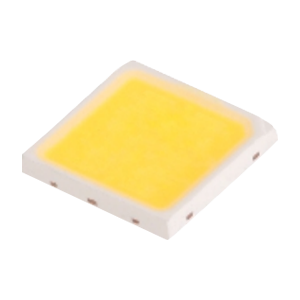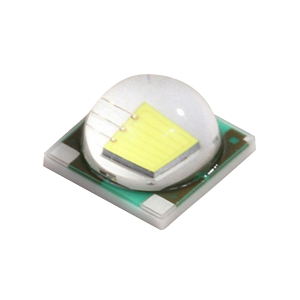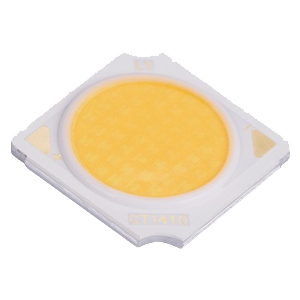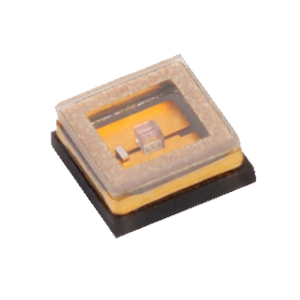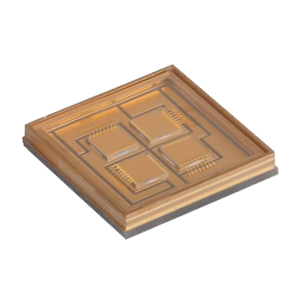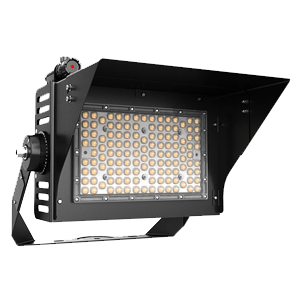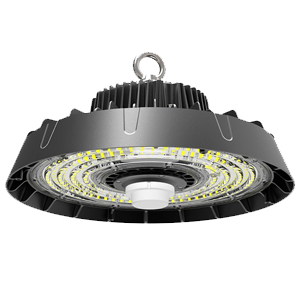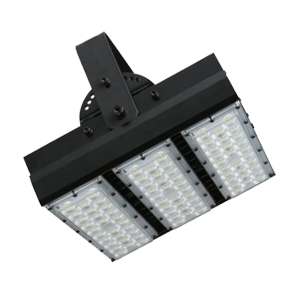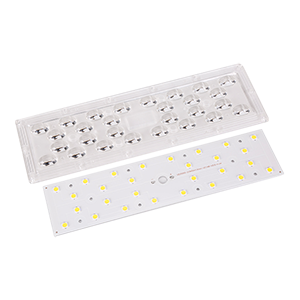Studies have shown that UVC can kill 99.9% of the coronavirus in the air
2021-12-20
Studies have confirmed that UVC violet light can kill 99.9% of the coronavirus in the air
Recently, Researchers at Columbia University in the United States published a paper online in the Nature subjournal Scientific Reports titled "Far-UVC light (222nm) efficiently and safely inactivates airborne. "human coronaviruses" research paper (click here to download), the Chinese translation is "Far ultraviolet (222 nm) can effectively and safely kill airborne coronavirus". Studies have shown that far-UVC 222 nm ultraviolet light can kill more than 99.9% of seasonal coronaviruses present in airborne droplets.
According to the study's lead author, Dr. David Brenner, a professor at Columbia University's College of Vagal Neurology and Surgery and director of the Center for Radiation Research at Columbia University's Irvine Medical Center: "Based on our findings, continuous air disinfection with C-band far-ultraviolet light within current regulatory limits could substantially reduce the level of airborne viruses in indoor environments where humans live."
The study was published June 24 in the journal Scientific Reports.

The research was published in Scientific Reports.
The "Far-UVC" referred to in the paper belongs to a part of UVC, and the wavelength range is 207 nm ~222 nm. It can penetrate the genetic material of microorganisms and break the bonds in the genetic material, preventing it from replicating, thus disinfecting objects and air. However, it cannot penetrate the tear layer of the eye or the layer of dead cells around the skin, and does not reach or damage living cells in the body, so it does not cause skin cancer or cataracts. In short, it's safe for humans, but it kills bacteria.
In previous studies, researchers have actually shown that C-band far-ultraviolet light can safely kill airborne influenza viruses. The new paper extends their previous research to seasonal coronaviruses, which are structurally similar to the novel coronavirus (SARS-CoV-2) that causes COVID-19.
In this study, the researchers used a spray device to aerosolize two common coronaviruses. The coronavirus contained in the aerosol then flowed through the air in front of a C-band far-ultraviolet lamp. After the aerosol was exposed to C-band far ultraviolet light, the researchers ran tests to see how much of the virus remained alive.
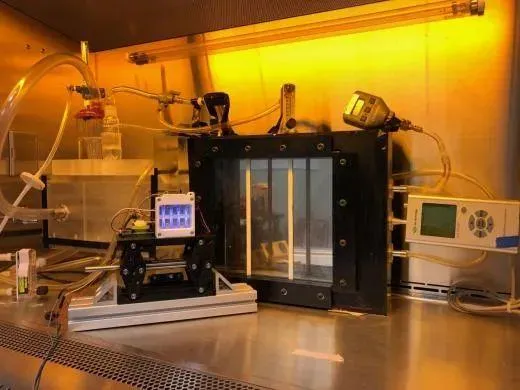
The device was used to test the effectiveness of C-band far ultraviolet light in killing airborne coronavirus.
(Photo credit: Center for Radiological Studies, Columbia University)
The study found that more than 99.9 percent of the viruses exposed were killed by very low doses of C-band far ultraviolet light. Based on these findings, the researchers estimate that sustained exposure to far UV rays within current regulatory limits would kill 90 percent of airborne viruses in about eight minutes, 95 percent in about 11 minutes, 99 percent in about 16 minutes, and 99.9 percent in about 25 minutes.
The susceptibility of coronaviruses to far ultraviolet light suggests that it is feasible and safe to use overhead far ultraviolet light in indoor public places where people are present to significantly reduce the risk of human-to-human transmission of coronaviruses, as well as other viruses such as influenza viruses. The susceptibility of coronavirus to UVC suggests that UVC UV lamps located above the head in occupied indoor public places may be feasible and safe to significantly reduce the risk of human-to-human transmission of coronavirus as well as other viruses such as influenza.
In another ongoing study, researchers are testing the effectiveness of C-band far-ultraviolet light against airborne novel coronavirus. Preliminary data suggest that far-ultraviolet lamps are equally effective in killing the novel coronavirus.
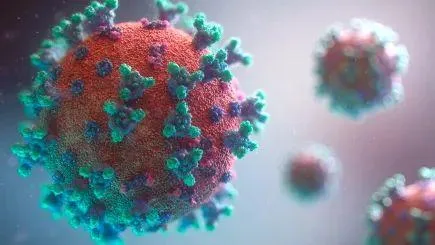
(Photo credit: Fusion Medical Animation)
Brenner said: "Far UV does not distinguish between types of coronaviruses, so we expect it to kill the novel coronavirus in the same way." Because the novel coronavirus is mainly transmitted through airborne droplets and aerosols formed by coughing and sneezing, a tool that can safely inactivate airborne coronavirus is important, especially if there are people nearby.
Brenner continued: "Because it can be used safely in crowded Spaces such as hospitals, buses, planes, trains, train stations, schools, restaurants, offices, theaters, gyms, and any indoor place where people can congregates, C-band far-UVB can be used in conjunction with other measures, such as wearing masks or washing hands, to limit the spread of the novel coronavirus and other viruses."
Although proved effective, about ultraviolet disinfection or to see!
According to the wavelength division of the electromagnetic spectrum: Ultraviolet (Ultraviolet) refers to the general term of radiation in the electromagnetic spectrum from (10 nm to 400 nm), the wavelength is between visible light and X-rays, which is invisible to the naked eye.
In 1801, the German physicist Ritter discovered that the outer part of the violet end of the daylight spectrum can sensitize photographic plates containing silver bromide, thus discovering ultraviolet light. Ultraviolet light can be used to kill bacteria, but too much ultraviolet light entering the body can cause diseases such as skin cancer and cataracts.

Mou Tongsheng, professor of Zhejiang University and director of Zhejiang Smart Health Lighting Research Center, in the report "Ultraviolet dose and Light Biosafety Evaluation"
Ultraviolet light can be divided into four regions according to different wavelengths: long-wave ultraviolet light for short UVA, wavelength 320 nm ~400 nm; UVB for short, wavelength 280 nm ~320 nm; Short-wave ultraviolet (UVC), wavelength 200 nm ~280 nm; Vacuum ultraviolet (UVD), wavelength 100 nm ~200 nm.
Among them, the penetration of UVA on clothing and human skin is much stronger than UVA, which can reach the depths of the dermis, and can act on the melanin in the epidermis, thereby causing skin melanosis and blackening the skin, so it is also known as "long wave dark spot effect ultraviolet".
Most of the UVB rays are absorbed by the epidermis of the skin and cannot penetrate into the skin. However, due to its high energy, it can produce strong light damage to the skin, and the dermal blood vessels in the irradiated part will produce dilation, and the skin can appear red, swollen, blisters and other symptoms, which is also known as "middle wave erythema effect ultraviolet".
Shortwave ultraviolet (UVC) has a disinfection and sterilization effect, also known as "C-band ultraviolet" or "shortwave sterilization ultraviolet". Its penetration ability is the weakest, unable to penetrate most transparent glass and plastic. Sunlight contains shortwave ultraviolet rays that are almost entirely absorbed by the ozone layer. Shortwave ultraviolet radiation is very harmful to the human body, short exposure can burn the skin, long-term or high intensity exposure can also cause skin cancer or cataracts and other diseases.
Traditional short-wave sterilizing ultraviolet light (wavelength 254 nm) can be used to sterilize unpopulated Spaces such as empty hospital rooms or subway cars. However, direct exposure to these traditional UV lamps in a crowded space is not acceptable, as it may be harmful to health.

Mou Tongsheng, professor of Zhejiang University and director of Zhejiang Smart Health Lighting Research Center, in the report "Ultraviolet dose and Light Biosafety Evaluation"
Mou Tongsheng, professor of Zhejiang University and director of Zhejiang Smart Health Lighting Research Center, also introduced in the report "Ultraviolet Dose and Light Biosafety Evaluation" that the spectral range of light radiation's impact on human health is 200 (180) nm to 3000nm. The benefits are the production of vitamin D3, release of nitric oxide to protect the heart; The harm is easy to get cataracts, skin cancer, skin aging and so on.
The band of light is neutral, its effect depends on how it is applied, the balanced application of ultraviolet light is very important, in which the dose is very critical. During the day, the dose of ultraviolet light has different changes, the impact on people is different, and different protection measures need to be taken according to the situation.
Does UVC deep UV harm the human body, how to protect?
Does UVC deep UV harm the human body, how to protect? Chen Jingwen, marketing director of Hubei Deep Purple Technology Co., LTD., said in the "Deep ultraviolet kill New coronavirus dose survey review and deep ultraviolet LED 'naughty three thousand questions'" that: This is a more classic problem, UVC deep ultraviolet is not harmful to human skin, but it is more harmful to human eyes. Almost 97% of the typical UVC-LED UV light with a wavelength of 275 nm will be absorbed by the stratum corneum of human skin, and more than 99.9% will be absorbed by the stratum corneum and the epidermis, and a very small part of the light will hit the dermis.
Ultraviolet light can only cause skin cells to become cancerous if it hits the dermis. Therefore, it is generally believed that UVC ultraviolet light has little effect on human skin. Of course, baby skin, including some human skin cuticle thinner, resistance to UVC UV rays is worse. Human eyes have no cuticle to protect them. UVC ultraviolet rays will cause lens and corneal lesions. Therefore, it is forbidden to look directly at the lit UVC-LED lamp bead.
The shorter the wavelength of light, the worse the penetration, which is determined by the wave-particle duality of light. Of course, specific to the substance, but also related to absorption. Is UVC deep UV harmful to human body? One of the easiest answers is, yes, don't expose yourself to UVC. But in fact, there is a big misunderstanding in this middle, that is, UVA, such as 365, 385, 395, is very harmful to human skin, because this wavelength of ultraviolet light can penetrate into the human dermis, causing skin cells to become cancerous.

From: Hubei Deep Purple Technology Co., LTD. Dr. Chen Jingwen "Deep ultraviolet kill New coronavirus dose survey Review and Deep ultraviolet LED 'naughty three thousand questions'"
But UVC UV rays, such as 275nm, travel much shallower in the epidermis of adults. After passing through the stratum corneum, more than 97% of the energy is absorbed, and not even 0.1% of the energy ends up in the dermis. Therefore, to be precise, UVC deep ultraviolet is not harmful to human skin, and the human eye without the stratum corneum is more dangerous. Of course, no matter how weak the light long-term exposure to the human body is also harmful.
Dr. Chen Jingwen also reminded everyone: "So do not blindly fear UVC deep ultraviolet rays, because the damage of short time skin exposure can be ignored; Don't put yourself at risk, staring at leds can definitely lead to eye damage."
It has long been recognized that ultraviolet light mainly damages the DNA chains of bacteria and viruses
As early as the beginning of the epidemic, Yan Jianchang, a researcher at the Institute of Semiconductors of the Chinese Academy of Sciences and deputy general manager of Shanxi Zhongke Lu 'an Ultraviolet Optoelectronics Technology Co., LTD., popularized many knowledge points for epidemic prevention and control and deep ultraviolet LED technology. The report points out that there are many effective methods of disinfection from the known methods. Including direct high temperature sterilization, using 75% alcohol and so on. In addition, ultraviolet sterilization is also clearly recognized, ultraviolet sterilization is no problem in principle, but it is necessary to pay attention to two points, can play a role in killing coronavirus or sterilization and disinfection of ultraviolet light, first of all, the wavelength of ultraviolet light is appropriate, called the appropriate band. At the same time, the energy of ultraviolet light is needed to be enough, that is, the dose of ultraviolet light is sufficient.
From the diagnosis and treatment plan of the fifth edition of the novel coronavirus, we can see that the intensity of ultraviolet radiation is greater than 90 microwatts per square centimeter for 30 minutes. It can kill the SARS virus, and the new coronavirus has a lot of similarities with the SARS virus. Both belong to a single positive strand RNA virus, so theoretically, the scientific and rational use of ultraviolet light can effectively inactivate the coronavirus. But note that here the UV needs to reach a certain intensity, and it needs to reach a certain time. In fact, if the intensity of irradiation is very large, the time can be greatly shortened.
Ultraviolet sterilization is not a particularly new thing, so far, has been nearly a hundred years of history. As early as 1903, Niels Ryberg Finsen used ultraviolet light to achieve the treatment of skin diseases, published a related book, and won the Nobel Prize in Physiology and Medicine, a long history.
Yan Jianchang, a researcher, said: "The reason why ultraviolet light can achieve efficient killing of viral bacteria is mainly to destroy DNA to sterilize. Because ultraviolet light has very high photon energy, it can destroy the DNA chain of bacteria and viruses, and kill bacteria and viruses from the root."
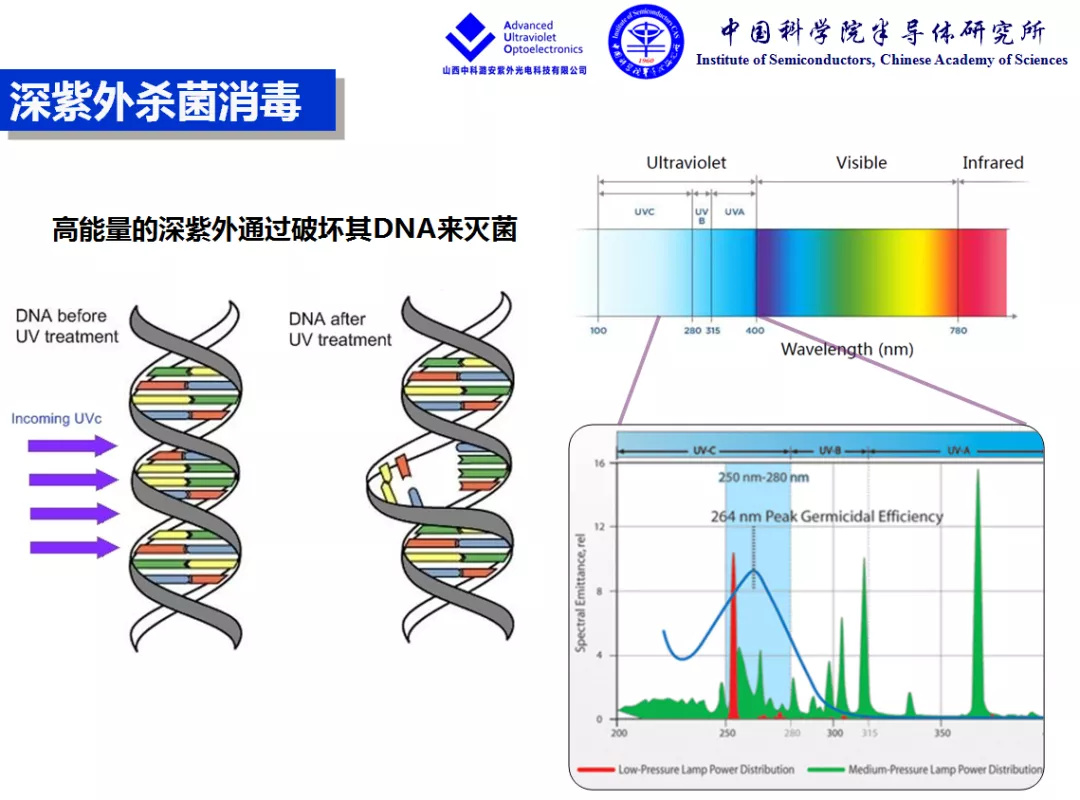
From: Yan Jianchang, researcher of Institute of Semiconductors, Chinese Academy of Sciences, Deputy general manager of Shanxi Zhongke Lu 'an UV Optoelectronics Technology Co., LTD
Report on Epidemic Prevention and Control and Deep ultraviolet LED Technology
The killing effect of different ultraviolet rays on bacteria and viruses is different. Traditional ultraviolet mercury lamps may be 253.7 or 254 nm, and in fact the most effective band may be more than 254 nm. According to the latest research results, the bactericidal effect of ultraviolet light may be higher near 264 nm. Based on this principle, it can be said that ultraviolet light has the characteristics of broad spectrum sterilization, whether it is bacteria, viruses or water algae, spores and other microorganisms, the killing effect is very significant, and the efficiency is very high. Compared with other sterilization methods, one advantage of ultraviolet sterilization is that after lighting, the ultraviolet light is turned off, and there is no chemical process participation and pollution.
Ultraviolet light if you want to achieve effective sterilization, you need enough energy, including enough irradiation intensity and enough time, and you need the right band. According to the wavelength, from long to short, the ultraviolet band is divided into UVA, UVB and UVC, of which UVC is the shortest wavelength and the highest energy band, we often call it the deep ultraviolet band. In fact, for sterilization, the most effective is UVC.
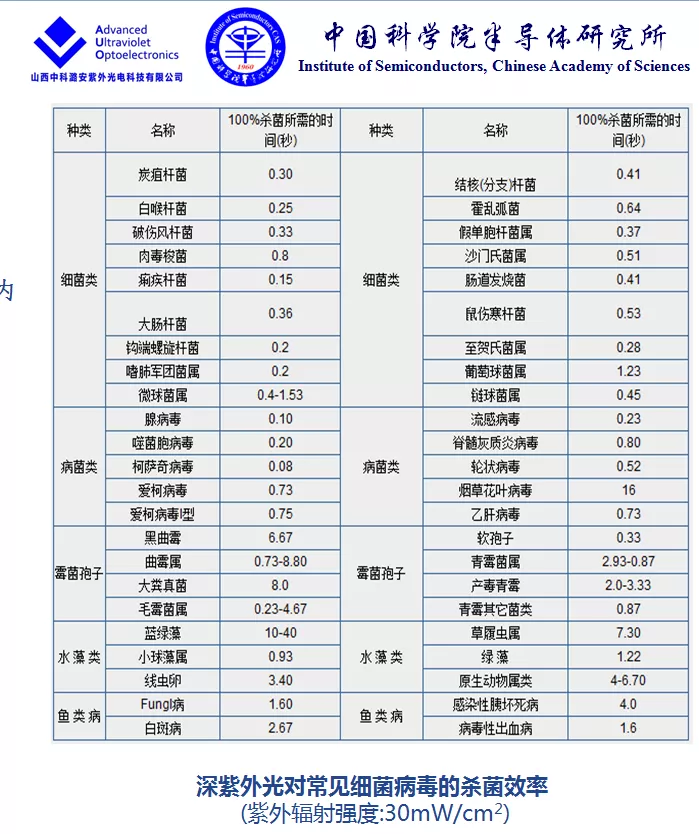
From: Yan Jianchang, researcher of Institute of Semiconductors, Chinese Academy of Sciences, Deputy general manager of Shanxi Zhongke Lu 'an UV Optoelectronics Technology Co., LTD
Report on Epidemic Prevention and Control and Deep ultraviolet LED Technology
Study on killing dose of novel coronavirus by UVC deep ultraviolet rays
About the dose standard, the industry spread a famous saying: do not talk about the dose, is to play rogue!
"The wavelength of light is neutral, and its effect depends on how it is applied," Mou said. "The balanced application of ultraviolet rays is very important, and the dose is very important."
What is the effective irradiation distance of deep ultraviolet UVC-LED? Some professionals have introduced that the effective irradiation distance of deep ultraviolet UVC-LED is not a fixed value, depending on the light power, the light propagation medium, and the definition of "effective". Although there is no fixed value, the effective distance can be estimated according to the known information of the application scenario. At the distance of 1.22 meters, the killing time of 8.9×105 pfu/mL MERS virus is 5min, respectively.
Researcher Zhang Guohua has said that the effective band of sterilization, the wavelength should be between 240nm-280nm, the main ultraviolet wavelength of mercury lamp is 254nm, and the wavelength of ultraviolet LED is generally used in 275nm. Studies have pointed out that 265nm band sterilization is the most effective, however, from the perspective of practical research, 254nm and 275nm sterilization effect in an order of magnitude, neck and neck. At present, the new coronavirus is rampant, and the research practice has found that the sterilization rate of killing the new coronavirus is 99.99%, and the dose required is 1445 mJ/cm2.
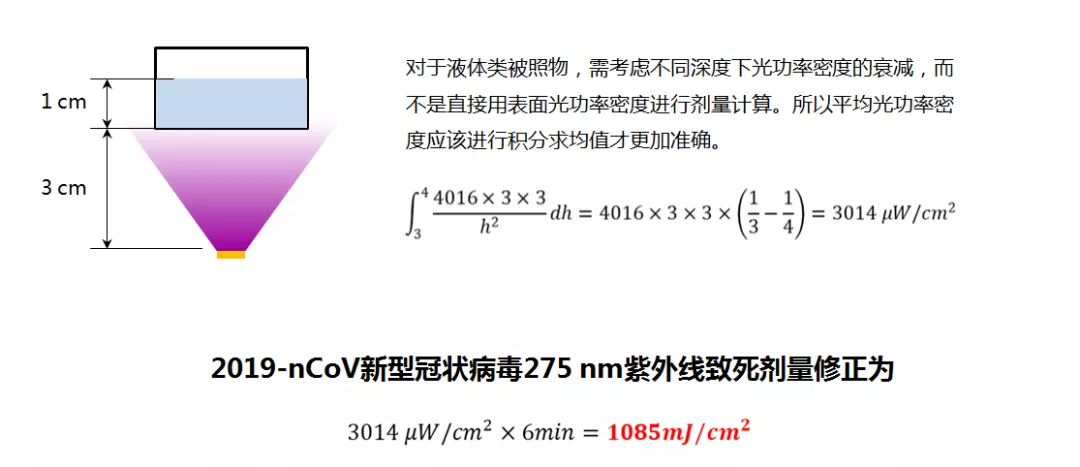
Excerpt: Chen Jingwen, Marketing director of Hubei Deep Purple Technology Co., LTD
"Deep ultraviolet kill the novel coronavirus dose survey Review and Deep ultraviolet LED 'naughty three thousand questions'"
Later, according to several domestic and foreign literature, some people also reviewed the lethal dose of the new coronavirus dose, and the 99.99% ultraviolet lethal dose of 2019-nCoV NCP with an initial concentration of about 105.8 /mL was 1445 mJ/cm2. But it's calculated by multiplying the optical power density by time. Later, Dr. Jianping Zhang of Bolb pointed out an important detail, that is, the SARS test scenario was an aqueous solution with a height of 25px, and using the surface intensity of 4016 to calculate the exposure dose of the entire solution was inaccurate.
The irradiation intensity is inversely proportional to the square of the distance, so the irradiation intensity at the bottom and the top of the solution are not the same, if the cumulative dose is calculated, the linear average should be taken; LED is a Xiaoping light source approximate point light source, the distribution of the illuminated surface is not uniform, but considering the small fluctuation in the 25px range, the impact is not large, here can be approximately average. The absorption of UVC in aqueous solution, as mentioned above, the absorption of 275nm in pure water is relatively small, and the density of viral dispersion is also limited. Without considering the absorption of water, after integrating the depth, the lethal dose is seriously revised to 1085mJ/cm2 for the reference of colleagues in the industry.
It should be noted that the experimental light source of the "lethal dose" comes from the low-pressure mercury lamp, and its value is difficult to guide the sterilization practice of UVC LED. Lethal doses for different wavelengths of UV light are an industry-wide problem that needs to be solved, not by looking at DNA absorption profiles.
// Article source network, picture source see explanation


